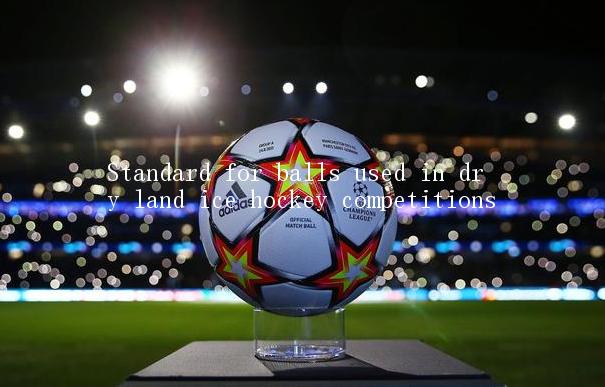Standard for balls used in dry land ice hockey competitions

Dryland ice hockey, a sport that combines ice hockey skills with football entertainment, is becoming increasingly popular in dry areas in winter. In dry land ice hockey competitions, the standard of using the ball is crucial to the progress of the game.
The standard for balls used in dry land ice hockey competitions must first meet the specifications of ice hockey competitions. Generally speaking, the standard ice hockey used in dry land ice hockey competitions has a diameter of 7.6 centimeters and a weight of between 170 and 220 grams. Such specifications not only help athletes use clubs to control, but also ensure fairness in the game.
Secondly, the standards for using balls in dry land ice hockey competitions must also consider the characteristics of the competition venue. Since there is no ice surface in dry land ice hockey competitions, the friction between the ball and the field will increase during the game, so the exterior material of the ball needs to have certain wear resistance. At the same time, the elasticity of the ball also needs to be moderate to ensure that athletes can pass and shoot accurately during the game.
In dry land ice hockey competitions, the standard for using the ball also involves the choice of color. Since dryland ice hockey competitions are often held outdoors, in order to ensure the visibility of the game, the color of the ball used in the game is generally bright orange or yellow, so that athletes and spectators can better identify the position and trajectory of the ball.
Finally, the standards for balls used in dry land ice hockey competitions should also have certain logos. Usually, the club used for competitions prints the logo of the relevant sponsor and the name of the competition to increase the publicity effect of the competition. At the same time, the ball manufacturer and the printing of relevant certification marks also help ensure the quality and reliability of the ball used in competition.
The standards for balls used in dry land ice hockey competitions must comply with the specifications of ice hockey competitions. Taking into account the characteristics of the venue, appropriate materials and colors should be selected, and relevant logos should be marked. Compliance with these standards can ensure the fairness and safety of the game and make dryland ice hockey games more exciting and interesting.
RELATED STORIES






LATEST NEWS







